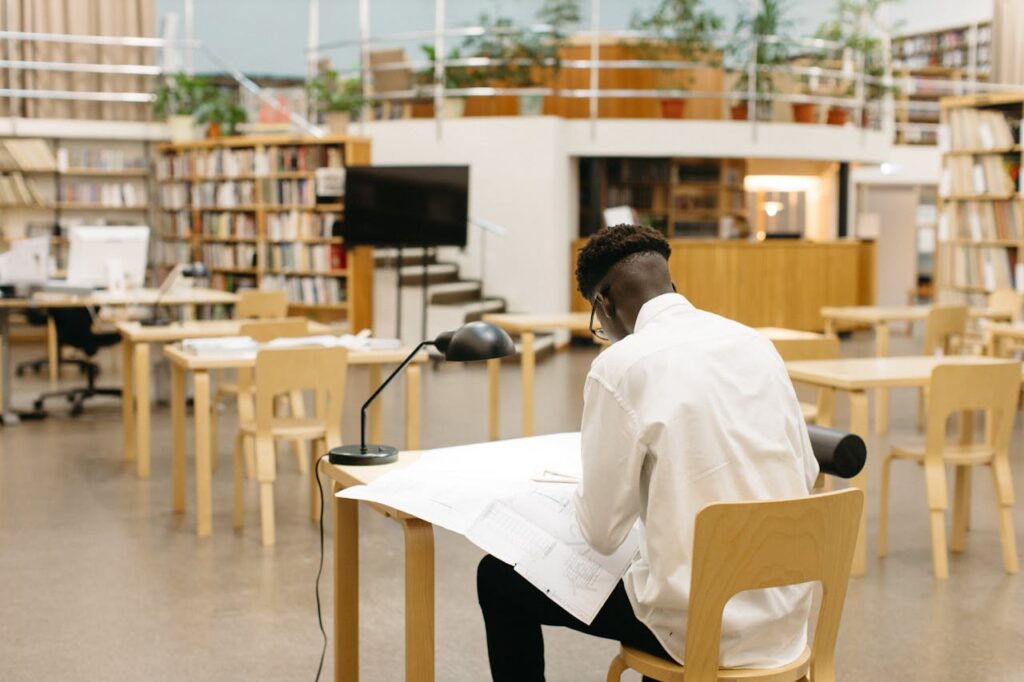Any writer can worry about plagiarism, but it’s incredibly terrifying for IB students. I believe that understanding plagiarism is more than just following the rules; it’s also about building academic ethics. As a teacher of IB writing for many years, I’ve seen students fall into plagiarism traps because they don’t have clear instructions about citing sources.
So, how to avoid plagiarism in essay writing? In this post, I will break down some specific steps you can take to make sure your paper is 100% original and free of plagiarism.
What Is Plagiarism in Essay Writing?
Plagiarism in essay writing is copying someone else’s work and passing it off as your own. From working with IB students, I know that some fall into this trap because they don’t fully understand plagiarism. Plagiarism includes copying without giving credit, using another student’s work, and even failing to cite statistics or data obtained from research.
IB places a lot of value on originality, meaning students must be very careful when using sources. To know how to get around plagiarism, it’s essential to understand what it means in different situations. Here are some common types that I’ve seen students do.
Direct Plagiarism
Despite its apparent nature, direct plagiarism is one of the most prevalent forms of academic dishonesty. It occurs when a student takes text from a source word-for-word without putting it in quotation marks or giving credit. In my experience, students frequently engage in direct plagiarism out of urgency or believing that small changes aren’t required to credit the original writer.
Nevertheless, the most apparent infraction of academic integrity is duplicating text word-for-word; even a single sentence or phrase duplicated without citation is considered a violation.
Paraphrasing Plagiarism
Paraphrasing plagiarism is more subtle and can be perplexing, particularly for students new to academic writing. It happens when the source is not credited and another individual’s ideas are rephrased.
Frequently, students think that modifying a few words or sentence structures is sufficient to establish the idea as their own. Conversely, the fundamental concept remains the property of the original author, regardless of the altered words.
Mosaic Plagiarism
Mosaic plagiarism, occasionally called “patchwriting,” entails assembling phrases or concepts from multiple sources to create a work that appears to be original but is not. It occurs when a student combines sentences or ideas from various authors without providing sufficient citations, resulting in a “mosaic” of borrowed ideas.
I believe mosaic plagiarism frequently results from a lack of clarity regarding the definition of originality.
Self-Plagiarism
Though it seems like a paradox, self-plagiarism is a genuine scholarly issue. This kind of plagiarism occurs when a student turns back over some of their own earlier work without authorization or appropriate reference.

Find out how incorporating questions into your essay can enhance clarity and reader engagement in our latest guide.
For instance, it may be considered self-plagiarism if you turn back over parts of an essay you produced for one course back off another. Self-plagiarism may seem benign, but it might deceive teachers into believing you have created original work when copying it from other sources.
Incremental Plagiarism
Now, let’s talk about incremental plagiarism definition. This is one of the most common types of plagiarism students do without meaning to. It happens when bits and pieces of information, like a fact or figure, are used in an essay without crediting the source. Students often forget to cite these smaller pieces because they think single facts or general information don’t need credit.
What Is a Good Rule to Follow to Avoid Plagiarism?
Giving credit for any idea, phrase, or piece of information that isn’t your own is one of the best ways to avoid plagiarism, in my view. From what I’ve seen, students often have trouble determining when to cite something, especially when quoting material. I tell my students a simple rule: if you didn’t come up with the idea yourself, you should cite it.
According to IB criteria, originality, and due credit are fundamental to academic integrity. Staying away from inadvertent plagiarism while maintaining the authenticity of your writing is possible with the aid of a few simple practices. Some rules that have worked well for me are these:
- Even if you have paraphrased the original text, the concept still belongs to someone else. Therefore, you must always cite paraphrased ideas. A citation is necessary in this case.
- Put direct text in quotations. If you are copying or paraphrasing a whole phrase, put it in quotation marks and cite it.
- Be cautious with common knowledge. Facts about the past or general scientific concepts don’t need citations since everyone knows them. Nevertheless, every in-depth examination or distinct interpretation does.
- Note the page numbers and publication information for any sources you use. As you research, note all the sources you consult. This practice guarantees accuracy and time savings when adding citations.
- Use a citation tool to ensure your work is up to par. There are many options, such as Zotero and EasyBib.
From my point of view, learning to correctly credit the ideas of others is about respecting the intellectual labor that underpins your own ideas and preventing plagiarism. Years of writing have taught me that this is an important habit to develop since it strengthens your writing and ensures that your work is academically honest.
How to Copy an Essay Without Plagiarizing?
An often-asked question is whether or not it is feasible to paraphrase an already-written essay without being guilty of plagiarism. The short answer is yes, but only if you carefully approach the subject.
You can consider essay organization, style, and arguments by referring to other essays, but you can’t use someone else’s work if you want to prevent plagiarism. Here’s how to use an essay as a template while maintaining originality.
1. Understand the Main Ideas, Then Set It Aside
The first thing you should do is read the essay carefully to understand its main points and how the arguments move. Read it once, make notes on the main ideas or organization, and then put the essay away. Don’t copy or paraphrase as you go. This method helps you understand the concepts without copying them from the book.
2. Create Your Outline
After you’ve thought about the critical points, use what you’ve learned to make a plan. You start to make the information your own by creating your arrangement. Making your plan will help you shape the essay from your point of view, giving it a different flow from the original.
3. Use Different Examples and Supporting Evidence
Get your sources so you don’t repeat the same points or proof. You can add new ideas and make the essay your own using different examples, even if the original essay used strong ones. This method also helps you improve your study, which is very important in the IB program.
4. Paraphrase Carefully and Cite Sources
Paraphrase the original essay carefully and cite it if you want to use any ideas or facts in your work. Simply altering a few words does not constitute paraphrasing; instead, it involves rephrasing the whole notion. No matter how much you paraphrase, you must always provide proper credit.
5. Review and Check for Originality
Finally, ensure your essay is original by checking it with a plagiarism detector before turning it in. In my opinion, this is a crucial stage in avoiding accidental duplication of the reference essay. Make sure your work is unique and fix any mistakes before submitting it using this last check.
How to Plagiarize Without Plagiarizing?
I’ve been asked how to use ideas from different sources without resorting to plagiarism a lot as an experienced IB writer. You must learn to shape those thoughts into something new to find the answer. Here’s how to use sources without changing the originality of your work.
Reinterpreting ideas in a way that shows you understand them is one of the best ways to learn. Instead of rephrasing or changing a few words, you should think about each idea differently. Here are some ideas on how to do this:
- Meaningful paraphrasing means expressing a sentence or paragraph’s main idea in your own words, changing many words and how the sentences are assembled.
- Use information from several sources to support your points. By using different points of view, you can make sure that your writing shows a more profound understanding instead of a direct copy.
- Add your analysis. Once you’ve presented an idea, give your own opinion or critical point of view. This addition makes the essay more personal.
- Always credit the source. You must credit the source whether you copy or build a work on someone else’s idea.
From what I’ve seen, using these methods doesn’t just stop plagiarism; they also make your work better by making it sound like you. Instead of just taking ideas from the academic work, you add to it by reinterpreting them and giving your point of view.
Don’t let the stress of the IB curriculum hold you back.
Are you having trouble coming up with topic suggestions for your IB Extended Essay? Or do you need help with Internal Assessment?
Our experienced writers can help you choose the perfect topic and assist you with any assignment.
You can order an Extended Essay tailored to your specific subject and requirements.
Our experienced IB writers are always ready to help.
Simply click:

If you’re wondering about plagiarism detection, read our article – can Turnitin detect essays bought online?
Conclusion
To me, avoiding plagiarism is as much about making good habits as knowing the rules. Try paraphrasing, quoting, citing, and double-checking your sources to ensure your work is original and plagiarism-free. By using these tactics to safeguard your grades, you can build a name for honesty and originality, traits that stand out in the IB program.
To help students confidently complete their assignments, IBWritingService.com provides professional advice specific to the IB’s requirements and expectations.

